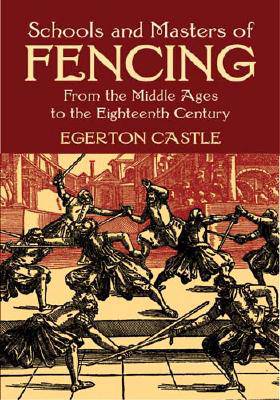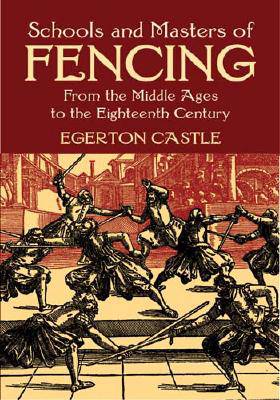
- Retrait gratuit dans votre magasin Club
- 7.000.000 titres dans notre catalogue
- Payer en toute sécurité
- Toujours un magasin près de chez vous
- Retrait gratuit dans votre magasin Club
- 7.000.0000 titres dans notre catalogue
- Payer en toute sécurité
- Toujours un magasin près de chez vous
20,45 €
+ 40 points
Description
The standard reference on historical swordsmanship since its 1885 publication, this volume is still widely considered the definitive work on fencing history and the art of European swordsmanship. The author, Egerton Castle, traces fencing from its roots in the unschooled brawling of the Middle Ages to its latter-day precision and refinement, focusing particularly on the 16th-century development of the rapier and the weapon's popularity in Renaissance Italy, where Italian masters founded the modern art of swordsmanship.
Envisioning the history of the sword as a history of humanity, the author proposes that the changes in modes of fencing corresponded to changes in manners. The rough, untutored fighting of the Middle Ages, for example, mirrored the supremacy of brute force in social and political life. The more subtle Renaissance era led to the ascendancy of the rapier and dagger, weapons of vicious elegance rather than sturdy brutality. Subsequent years saw a dwindling incidence of dueling, the decline of the sword to an article of gentlemen's apparel, and the reduction of swordsmanship to a courtly accomplishment akin to dancing.
"The subject is full of interest," the author notes in his Introduction, "not only for the fencer who looks upon his favourite pastime as a science, but also in a high degree for the novelist, the painter, the actor, and the antiquarian." All will welcome the return of this abundantly illustrated and long-out-of-print work.
Envisioning the history of the sword as a history of humanity, the author proposes that the changes in modes of fencing corresponded to changes in manners. The rough, untutored fighting of the Middle Ages, for example, mirrored the supremacy of brute force in social and political life. The more subtle Renaissance era led to the ascendancy of the rapier and dagger, weapons of vicious elegance rather than sturdy brutality. Subsequent years saw a dwindling incidence of dueling, the decline of the sword to an article of gentlemen's apparel, and the reduction of swordsmanship to a courtly accomplishment akin to dancing.
"The subject is full of interest," the author notes in his Introduction, "not only for the fencer who looks upon his favourite pastime as a science, but also in a high degree for the novelist, the painter, the actor, and the antiquarian." All will welcome the return of this abundantly illustrated and long-out-of-print work.
Spécifications
Parties prenantes
- Auteur(s) :
- Editeur:
Contenu
- Nombre de pages :
- 336
- Langue:
- Anglais
- Collection :
Caractéristiques
- EAN:
- 9780486428260
- Date de parution :
- 20-05-03
- Format:
- Livre broché
- Format numérique:
- Trade paperback (VS)
- Dimensions :
- 166 mm x 236 mm
- Poids :
- 462 g

Les avis
Nous publions uniquement les avis qui respectent les conditions requises. Consultez nos conditions pour les avis.






